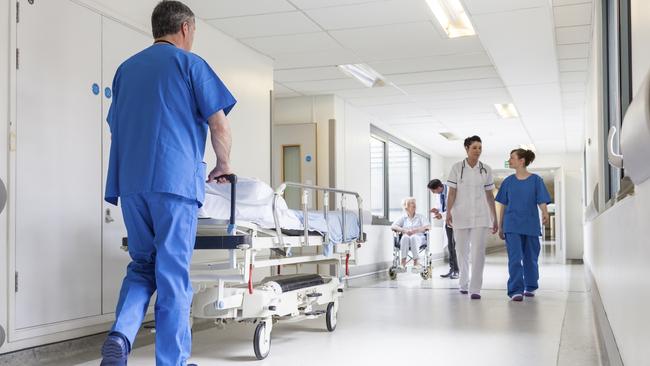Private health cover numbers still dwindling, APRA reports
Younger Australians continue to dump private health cover in their thousands, putting more heat on the cost of care.

Almost 10,000 Australians dumped private health cover in the last three months of last year, leaving the share of members with hospital cover at its lowest level in 12.5 years and deepening the industry’s “death spiral” crisis.
The latest figures from the Australian Prudential Regulation Authority show that at the end of last year, 44 per cent of Australians held some form of private hospital treatment insurance, after about 9,400 Australians junked their policies in the last three months of the year — mainly younger members aged between 20 and 34 years.
About 53 per cent of the population holds some form of general treatment cover, a figure which held steady over the last quarter of the year.
Over the calendar year, profit across the private health insurance industry rose 14.3 per cent over 2019 to $1.44 billion. However, there was a large jump in net investment income, which surged 238 per cent to $640 million.
Insurers derive a large part of their profitability from returns from invested premium revenue.
The amount of claims paid increased 4 per cent, while premiums were up 2.5 per cent.
The APRA data showed a continued deterioration in the business performance of insurers with net margins contracting from 5.2 per cent to 3.9 per cent in the year.
Despite the deterioration in insurance performance, profitability improved due to an increase in net investment income, largely driven by stronger returns across stock markets.
APRA executive Geoff Summerhayes earlier this month questioned the ongoing viability of Australia’s private health insurance system and called for an urgent government review into its future, predicting only three private health insurers will have a sustainable business model by 2022 as young health fund members continue to dump cover while as more older, costlier members continue to take up insurance.
CHOICE health campaigner Dean Price said Australians were “abandoning” private health cover.
“It’s no wonder — private health insurance costs too much, is too confusing and offers too little value,” Mr Price said.
Mr Price said the figures were “further proof of the death spiral” in private health insurance.
“Young people are voting with their feet and telling health insurers what they’re offering is poor value,” he said.
“We know that premiums are going to increase on April 1. With some funds increasing by nearly 6 per cent from April, we just can’t see the health insurance death spiral slowing.”
There are 35 health insurers, and many are smaller, community-focused health funds.
Private health cover has declined to its lowest level since 2007 as policyholders continue to leave insurers amid ever-increasing premiums and fewer benefits. Premiums have risen 71 per cent over the last decade – faster than wages, inflation and house price increases.
Five years ago, 40 per cent of people aged 20 to 39 had hospital cover. Now that figure has dropped to 34 per cent. At the same time, an ageing population is claiming more on its insurance than ever.
The Grattan Institute has blamed “greedy” doctors and hidden private hospital fees for the rising cost of private health insurance, and issued a report last month with found premiums could be cut by 10 per cent if private hospitals focused on treating patients rather than keeping them in longer to recoup more money.
It identified up to $2 billion a year in savings the sector could be making, helping pass on lower premiums to their customers.
Out-of-pocket costs for hospital treatment quadrupled in the 10 years from 2007-08 to 2017-18 to a total of $3.9bn.
APRA data released on Tuesday shows prostheses costs have risen 6.6 per cent in just three months and up 5.1 per cent over last year.
Private Healthcare Australia chief executive Dr Rachel David said it was time to get serious about tackling inflated prices and waste in the system.
“Yet again the APRA data shows that the growth in claims cost for medical devices (prostheses) continues to be a major issue impacting affordability in the private health sector,” Dr David said.
Medical device companies are continuing to drive up the volume of sales of their products to offset Government measures to reduce inflated prices, she said.





To join the conversation, please log in. Don't have an account? Register
Join the conversation, you are commenting as Logout